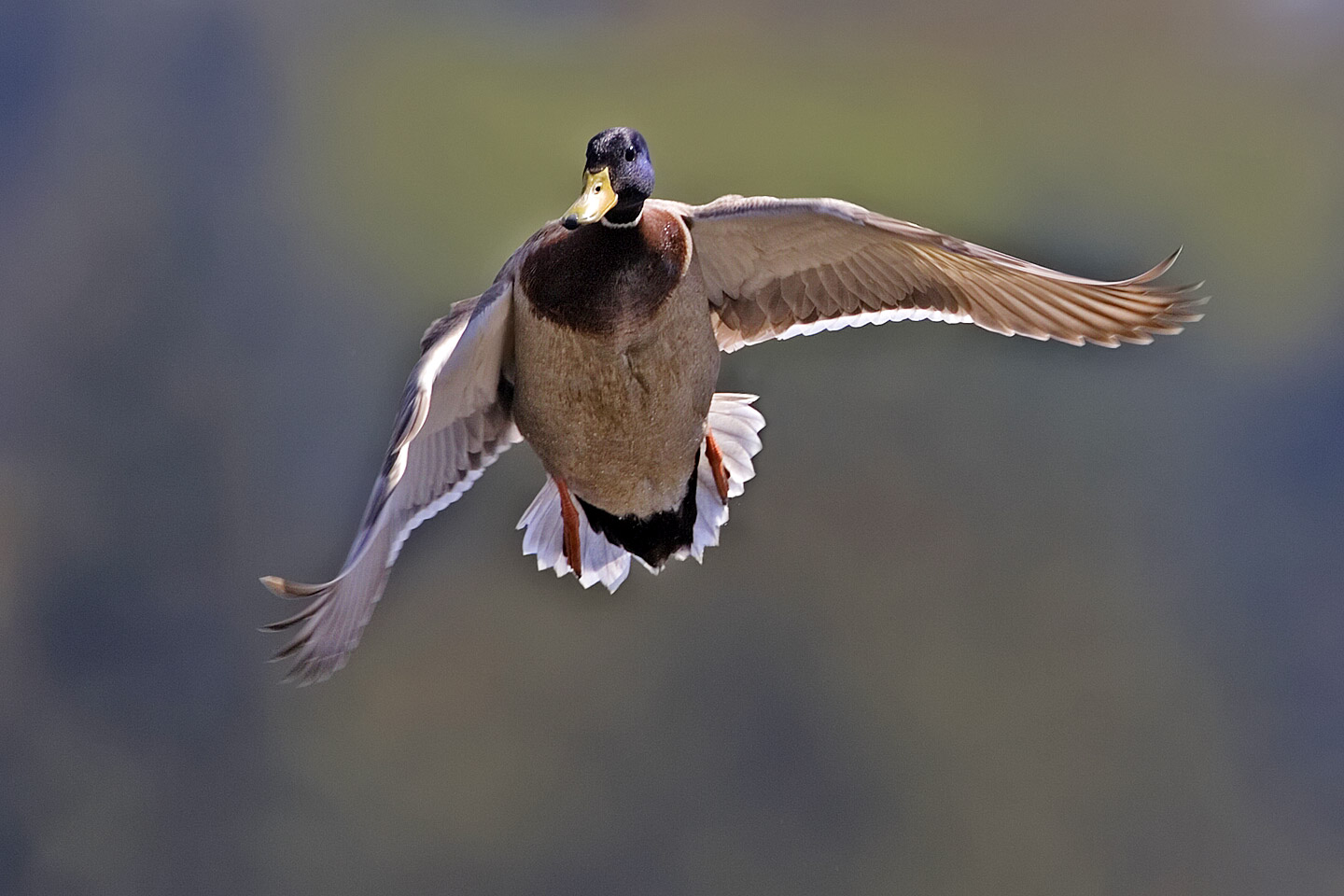- Avialae
Taxobox | name = Avialans
fossil_range =Late Jurassic – Recent

image_width = 250px
image_caption =Mallard in midflight.
regnum =Animal ia
phylum = Chordata
classis = Sauropsida
superordo =Dinosaur ia
ordo =Saurischia
subordo =Theropoda
unranked_familia = Avialae
unranked_familia_authority = Gauthier, 1986
subdivision_ranks = Sub-clades
subdivision =See text.Avialae ("bird wings") is a
clade containingbird s (Aves ) and their most immediatedinosaur ian relatives.Competing definitions
There is much debate and controversy about the phylogeny of dinosaurs and birds, and different studies produce different results. The group Avialae can include different subgroups when it is defined differently. Including or excluding "
Archaeopteryx " from the groupAves has a large effect on these subgroups of Avialae.Character-based definition
Avialae is traditionally defined as an apomorphy-based clade (that is, one based on physical characteristics).
Jacques Gauthier named Avialae in 1986, and first defined it in 2001 as all dinosaurs that possessed featheredwing s used in flapping flight, and the birds that descended from them.Gauthier, J. (1986). "Saurischian monophyly and the origin of birds." In: K. Padian, ed. "The origin of birds and the evolution of flight." San Francisco: California, Acad.Sci. pp.1–55. (Mem.Calif.Acad.Sci.8.)] Gauthier, J., and de Queiroz, K. (2001). "Feathered dinosaurs, flying dinosaurs, crown dinosaurs, and the name Aves." Pp. 7-41 in "New perspectives on the origin and early evolution of birds: proceedings of the International Symposium in Honor of John H. Ostrom" (J. A. Gauthier and L. F. Gall, eds.). Peabody Museum of Natural History, Yale University, New Haven, Connecticut, U.S.A.]Avialae vs. Aves
Gauthier Gauthier, J., and de Queiroz, K. (2001). "Feathered dinosaurs, flying dinosaurs, crown dinosaurs, and the name Aves." Pp. 7-41 in "New perspectives on the origin and early evolution of birds: proceedings of the International Symposium in Honor of John H. Ostrom" (J. A. Gauthier and L. F. Gall, eds.). Peabody Museum of Natural History, Yale University, New Haven, Connecticut, U.S.A.] (page 34) identified four conflicting ways of defining the term "Aves", which is a problem because the same biological name is being used four different ways. Gauthier proposed a solution, number 4 below, which is to reserve the term
Aves only for the last common ancestor of all living birds and all of its descendants. He assigned other names to the other groups.# Aves can mean those advanced
archosaur s with feathers (alternatelyAvifilopluma )
# Aves can mean those that fly (alternately Avialae)
# Aves can mean all reptiles closer to birds than tocrocodile s (alternatelyPanaves )
# Aves can mean the last common ancestor of all the currently living birds and all of its descendants (a "crown group"). (alternatelyNeornithes )Under the fourth definition "Archaeopteryx" is an Avialan, and not a member of
Aves . However, Gauthier's restriction of Aves to modern birds has not been widely adopted in the paleontological literature, which has led to the wide usage of Avialae to include all dinosaurs closer to birds than to dromaeosaurs. This often leaves few, if any, non-avian avialans (for example, the only non-avian avialan in many recent studies has been "Epidendrosaurus"--all other primitive birds are considered true avians).The earliest known theropod dinosaur which may have had the capability of powered flight is "
Archaeopteryx " from the lateJurassic Period .Alonso, P. D., Milner, A. C., Ketcham, R. A., Cookson, M. J. & Rowe, T. B. (2004). "The avian nature of the brain and inner ear of Archaeopteryx". Nature. 430(7000): 666–669. PMID 15295597. doi|10.1038/nature02706. [http://www.ucm.es/info/paleo/personal/patricio/DMKCR-2004.pdf PDF fulltext] [http://www.nature.com/nature/journal/v430/n7000/suppinfo/nature02706.html Supplementary info] ] "Archaeopteryx" is almost always included within Avialae, and is the earliest known member of that group.Branch-based definition
Several authors have use a similar, but branch-based, definition; "all
theropod s closer to birds than to "Deinonychus "."Weishampel, David B.; Dodson, Peter; Osmólska, Halszka (eds.) (2004). "The Dinosauria", Second Edition. University of California Press., 861 pp.] Senter, P. (2007). "A new look at the phylogeny of Coelurosauria (Dinosauria: Theropoda)." "Journal of Systematic Palaeontology", (doi|10.1017/S1477201907002143).]
Wikimedia Foundation. 2010.
